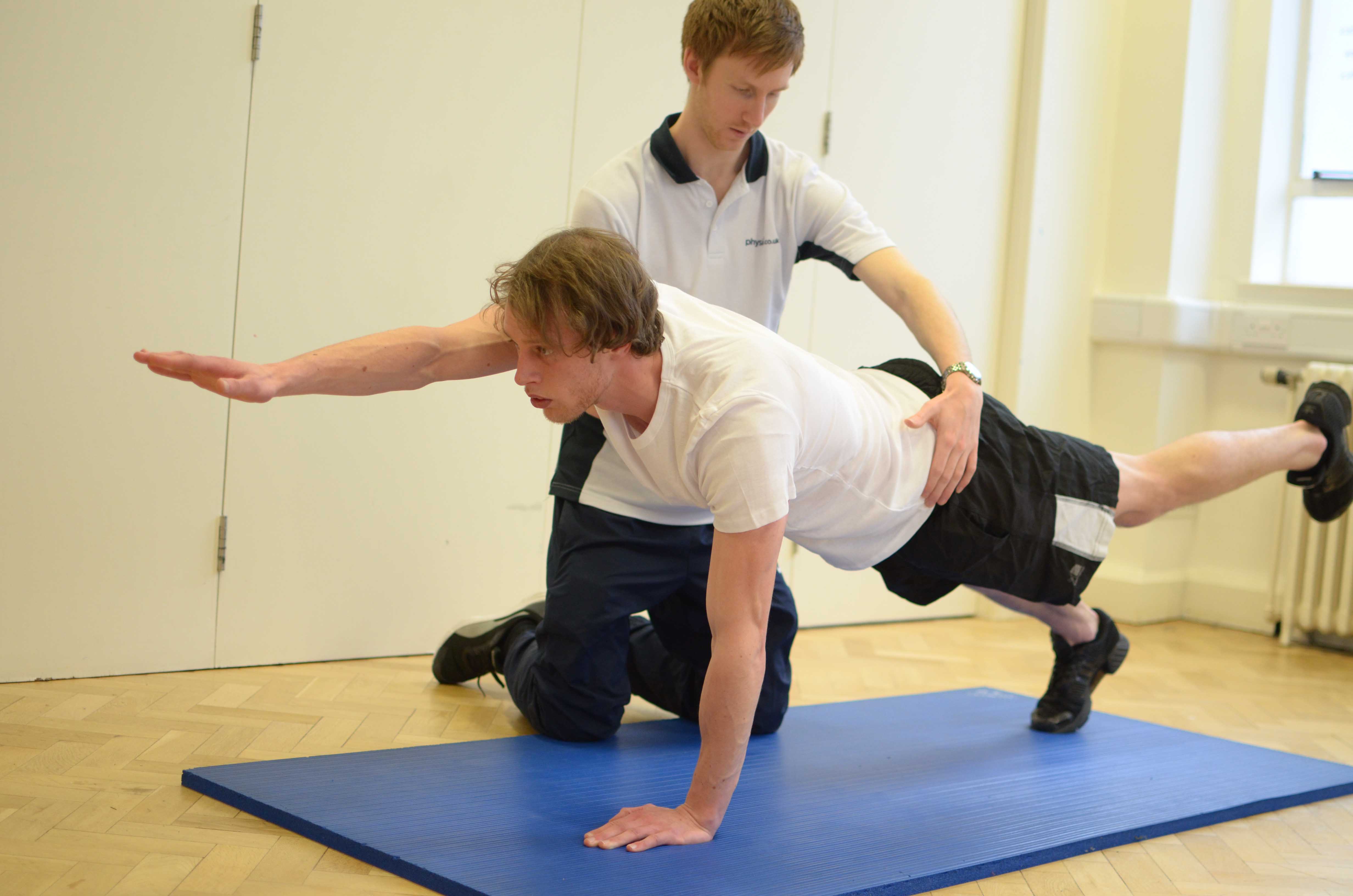What is postural lower back pain?Postural lower back pain is any pain or discomfort in the lower back area that is caused by long standing poor posture. Physiotherapy can treat the symptoms of postural lower back pain.
How does postural lower back pain happen?Poor postures often occur in sitting and standing positions and may develop from long periods of time at a computer or when driving long distances.This can put extra strain on ligaments, muscles and tendons causing then to become overstretched and painful. If they are constantly in the incorrect position, these structures may become tight and normal movement may become more difficult.
What are the symptoms of postural lower back pain?The main symptoms of postural lower back pain are pain, stiffness and reduce range of movement in the area. Muscle spasm may be seen in the lower back region, and this is one of the body’s protective mechanisms. Other symptoms may include:
- numbness
- tingling / pins and needles
- gait problems
- balance problems
What should I do if I have postural lower back pain?If you notice any of the described symptoms of postural lower back pain, it is important that you seek professional help as soon as possible. Your GP will be able to prescribe you with painkillers or anti-inflammatory drugs to help you remain as active as possible. Physiotherapy is a very effective way of minimising the symptoms of back pain and also improving your posture to reduce the risk of future problems.
Physiotherapy treatment for postural lower back pain.The key to postural lower back pain management is to maintain as active as possible to prevent long-term stiffness and weakness. Therefore, physiotherapy will include an individualized programe of strengthening and range of movement exercises. Cryotherapy (ice), heat and massage may be used to reduce pain and muscle spasm. Additional treatments include:
- Electrotherapy
- Manipulation / Mobilization
- Hydrotherapy
- Soft Tissue Treatment
What shouldn’t I do if I have postural lower back pain?You should try and avoid activities which involve sitting or driving for long periods at a time. If this is part of your job and cannot be reduced, take regular breaks and carry out the postural exercises shown to you by your physiotherapist. Avoid repetitive activities as this may aggravate the symptoms further.
Could there be any long-term effects from postural lower back pain?If you ignore your symptoms, the postural pain will get worse and become more difficult to reduce in the future. Chronic (long-term) postural problems may cause damage to the joints in the lower back which will make movement even more painful and could eventually lead to arthritis.

Writer
Dr. Sushanta Kumar Ghose
Consultant Physiotherapist
DIU Medical Center


